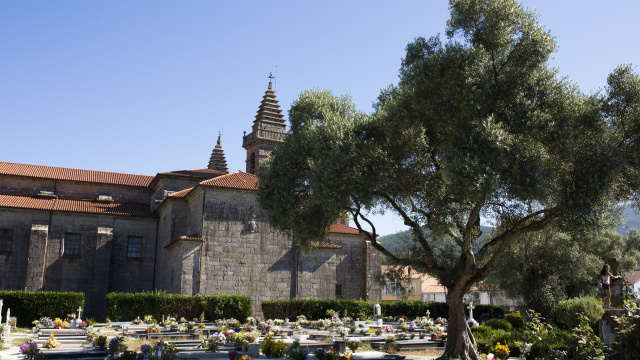Discover Padrón

Cementery of Adina
It is known that the lands surrounding the Iria Flavia church has been used as a place of burial since ancient times whereas the archaeological remains of the Roman and Swabian times clearly support this fact-the antropomorphic sarcophagi that today occupy the atrium are from the 6th century.
The current cementery has between it walls two crosses and four centenary olive trees that are part of the List of Singular Trees of Galicia (Catálogo de Árbores Senlleiras de Galicia). Under one of these olive trees is located the tomb of Camilo José Cela (Iria Flavia, 1916 - Madrid, 2002).
Another famous Galician writer, Rosalía de Castro (Conxo, 1837 - Padrón, 1885) expressed her desire to be buried in this holy and whrere her remains were kept from the year of her death until 1891, when they were transferred to the mausoleum, in the Panteón de Galegos Ilustres in Santiago de Compostela. Nonetheless, the cementery has a gravestone in her honor.







































